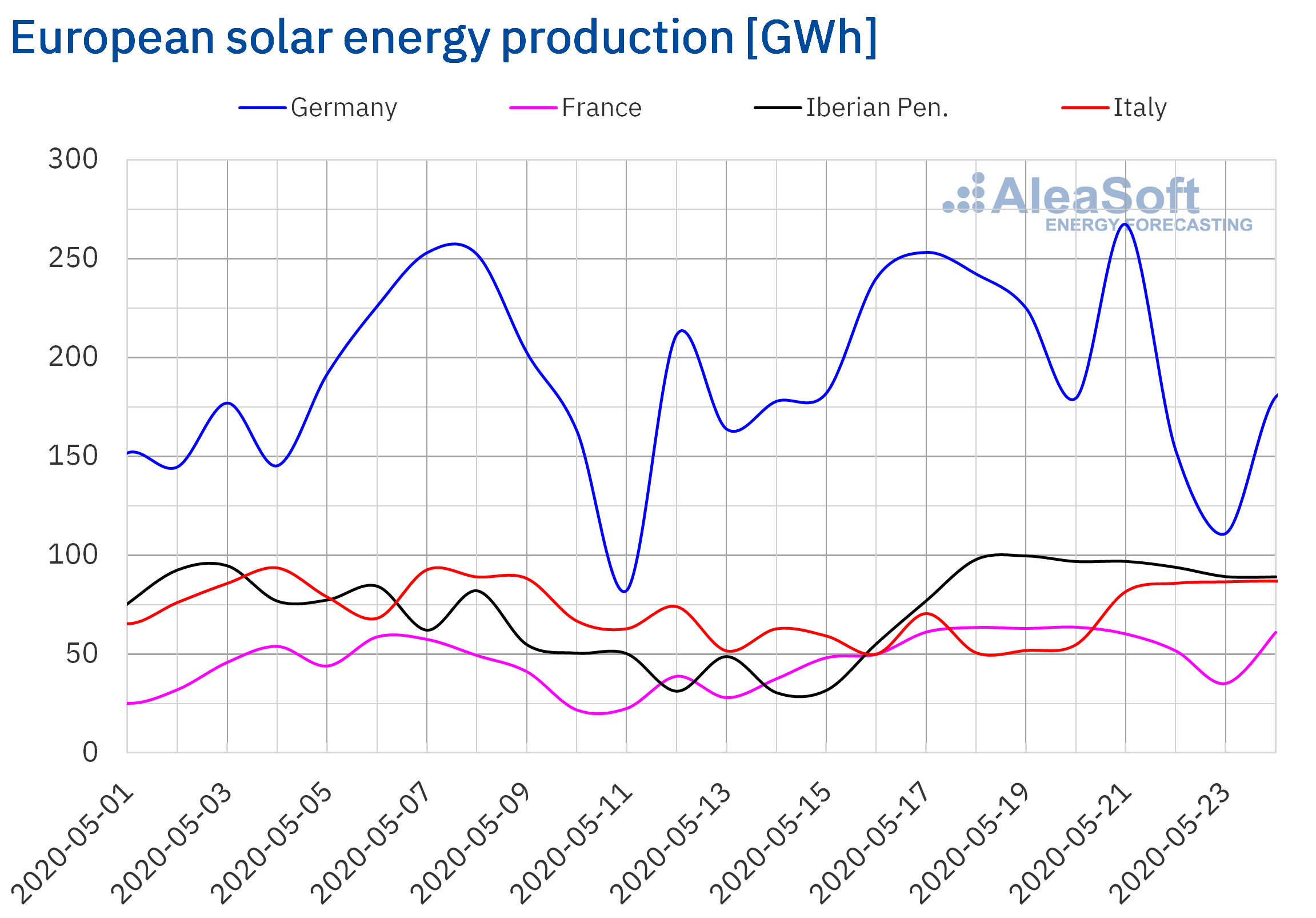Solar Power Boom Drives European Electricity Prices Negative

Table of Contents
The Surge in Solar Power Generation
The unprecedented growth of solar energy capacity across Europe is the primary catalyst for negative electricity prices. Several factors have converged to create this boom: increased government incentives, plummeting solar panel costs, and a heightened public awareness of climate change.
-
Increased Solar Farm Development: Large-scale solar farms are proliferating across sun-drenched regions of Europe, dramatically increasing the overall solar energy output. Countries like Spain, Italy, and Germany are leading the charge in this expansion, constructing massive solar power plants capable of generating gigawatts of electricity. This large-scale deployment is crucial in driving down the cost of solar energy.
-
Residential and Commercial Solar Adoption: The uptake of rooftop solar panels by households and businesses is equally significant. Government subsidies, tax breaks, and feed-in tariffs are incentivizing homeowners and businesses to install solar panels, contributing substantially to decentralized solar energy generation. This distributed generation further contributes to the overall increase in solar power production.
-
Technological Advancements: Continuous improvements in solar panel efficiency and the development of more sophisticated energy storage solutions are enhancing the competitiveness and reliability of solar power. Higher efficiency panels generate more electricity per unit area, while advanced battery storage systems mitigate the intermittency challenges associated with solar power. These advancements are key to making solar energy a more viable and stable source of electricity.
The Impact of Intermittency and Excess Supply
Solar power's intermittent nature—its dependence on sunlight—creates periods of surplus energy, particularly during peak sunshine hours. This excess supply often overwhelms the grid, causing electricity prices to plummet and, in some cases, turn negative.
-
Peak Solar Production: Midday, when solar power generation reaches its zenith, poses the biggest challenge for grid operators. The sudden influx of solar energy can outstrip demand, leading to a surplus that must be managed effectively.
-
Lack of Sufficient Storage: While battery storage technology is advancing rapidly, it's still not sufficiently developed to handle the significant fluctuations in solar power generation. More efficient and cost-effective energy storage solutions are critical to smoothing out the supply and preventing price collapses.
-
Grid Management Challenges: Balancing supply and demand in a grid increasingly reliant on intermittent renewable sources like solar power presents substantial challenges for grid operators. Sophisticated grid management systems and smart grid technologies are crucial for effectively integrating solar power and preventing grid instability.
The Role of Energy Market Mechanisms
The structure of European electricity markets significantly influences the frequency of negative electricity prices. Spot markets, where electricity is traded in real-time, are particularly susceptible to price volatility based on immediate supply and demand dynamics.
-
Spot Market Dynamics: In these real-time markets, when solar energy supply surpasses demand, prices can rapidly drop to zero or even become negative. This is because producers are sometimes willing to pay to offload excess electricity rather than curtail production.
-
Wholesale Electricity Trading: The interaction between various energy sources in the wholesale electricity market plays a crucial role in price fluctuations. The influx of cheap solar power directly competes with other energy sources, impacting their profitability and influencing overall market pricing.
-
Market Regulation and Policy: European energy policies designed to promote renewable energy, while beneficial for environmental sustainability, also indirectly affect market mechanisms and pricing dynamics. Policies that incentivize solar energy deployment can accelerate the occurrence of negative electricity prices.
Economic and Environmental Implications
The phenomenon of negative electricity prices has significant economic and environmental consequences. While consumers may benefit from lower energy bills, the impact on energy producers and grid stability requires careful consideration.
-
Impact on Conventional Power Plants: Fossil fuel power plants, less flexible and adaptable than renewable energy sources, struggle to compete in a market with negative prices. This underscores the transition towards a cleaner energy system but also highlights the need for a managed and strategic energy transition.
-
Financial Incentives for Solar Adoption: Negative electricity prices paradoxically create a stronger incentive for further investment in solar power. The ability to sell excess energy, even at a negative price, can still be more profitable than not producing any energy at all.
-
Environmental Benefits: The widespread adoption of solar energy is a significant step towards reducing Europe's reliance on fossil fuels, contributing to its climate change mitigation goals and promoting environmental sustainability.
Conclusion
The solar power boom is fundamentally transforming the European electricity market, resulting in increasingly frequent negative electricity prices. This trend, driven by a surge in solar energy generation, the inherent intermittency of solar power, and specific energy market mechanisms, presents both opportunities and challenges. While it represents a crucial step towards a cleaner energy future, it necessitates innovative grid management strategies and adaptations by energy producers. Continued investment in solar power and smart grid technologies is vital to harnessing the full potential of this clean energy revolution and mitigating potential risks. Understanding the dynamics of the solar power boom and its impact on electricity prices is essential for policymakers, energy producers, and consumers alike. Embrace the future of clean energy and stay informed about the latest developments in the European solar energy sector.

Featured Posts
-
 One Plus 13 R Review A Budget Friendly Flagship Compared To The Pixel 9a
Apr 29, 2025
One Plus 13 R Review A Budget Friendly Flagship Compared To The Pixel 9a
Apr 29, 2025 -
 Open Thread For February 16 2025 Your Thoughts And Ideas
Apr 29, 2025
Open Thread For February 16 2025 Your Thoughts And Ideas
Apr 29, 2025 -
 Willie Nelsons 77th Solo Album A Pre 92nd Birthday Release
Apr 29, 2025
Willie Nelsons 77th Solo Album A Pre 92nd Birthday Release
Apr 29, 2025 -
 Negeri Sembilans Rise As A Malaysian Data Center Hotspot
Apr 29, 2025
Negeri Sembilans Rise As A Malaysian Data Center Hotspot
Apr 29, 2025 -
 Data Centers Thrive In Negeri Sembilan Malaysia A Growing Hub
Apr 29, 2025
Data Centers Thrive In Negeri Sembilan Malaysia A Growing Hub
Apr 29, 2025
